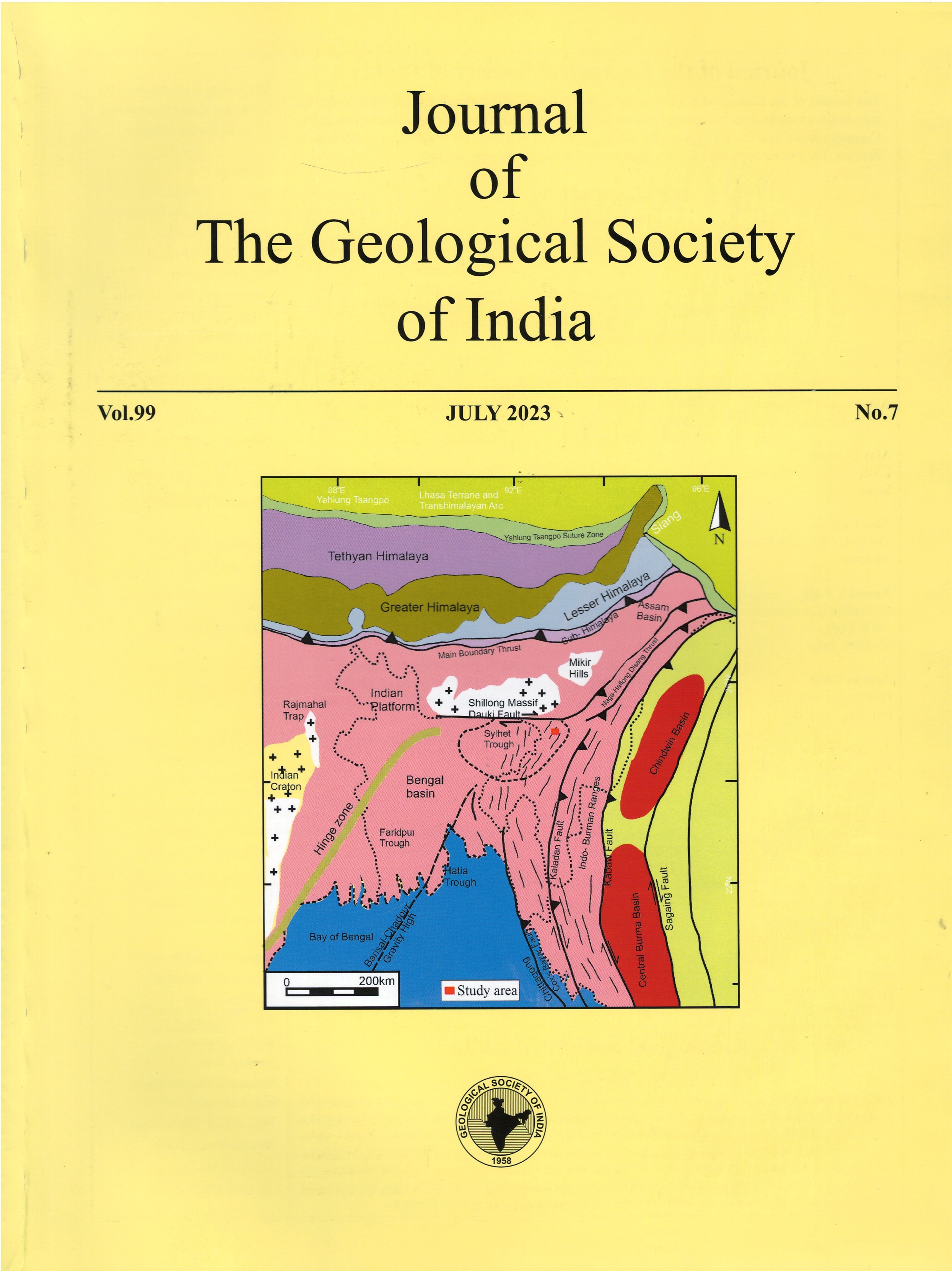Channel Dynamics of a Middle Reach of Rapti River, Eastern Indo-Gangetic Plain, India
DOI:
https://doi.org/10.1007/s12594-023-2420-zKeywords:
No keywords.Abstract
The Rapti a foothills-fed river is emerging from the Lesser Himalayan zone of southern Nepal. It has shifted its course at its foothills and middle reaches several times and has been affecting many localities in the last few decades. Keeping this in view a severely affected 94 km. long stretch of Rapti river flowing in the Shravasti district of eastern Uttar Pradesh was selected for the study of channel dynamics. In the present work, the geographic information system (GIS) and remote sensing (RS) techniques were used to evaluate the river shifting and assessment of related effects on the adjacent landscapes between the years 1980 to 2020. Satellite image of Landsat and Sentinel was also used to determine the spatio-temporal changes occurring in the river channel for the last forty years. The river channels, their centre lines and bars were digitized in a GIS environment and all channels were divided into four reaches, viz. A, B, C and D. Twenty cross-sections perpendicular to the centre line representing the position of the channel in the year 1980 were drawn. The sinuosity index, measurements of the channel migration, channel width and bank line shift of the channel were calculated.
The sinuosity indices of the river channels for the years 1980, 1990, 2000, 2010 and 2020 were computed as 1.52, 1.47, 1.47, 1.70 and 1.48, respectively. Temporal changes in sinuosity exhibit the meandering pattern of the river channel. Overlayed active channel centre lines of the years 1980, 1990, 2000, 2010 and 2020 show the migrational trend of the river channel. The maximum migration has occurred along reaches A and D. The extensive migration and sedimentation in the channel also alter the channel width that varies significantly along reaches A and C. Apart from this, the geomorphic features viz. channel migration, bank line erosion, abandoned channels, expansion of meanders, oxbow lake, chute cut off, neck cut off, etc. were identified as indicators of active erosion on the flood plain of the Rapti. It has been observed that river migration and bank line erosion are severely affecting the many rural settlements situated in the active flood plain. This study infers that the Rapti river channel has been migrating frequently for the last forty years and is increasing the vulnerability of flood hazards in its active flood plains.

 Vijay Kumar Singh Rathore
Vijay Kumar Singh Rathore






